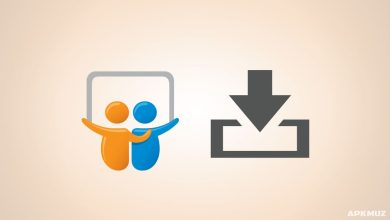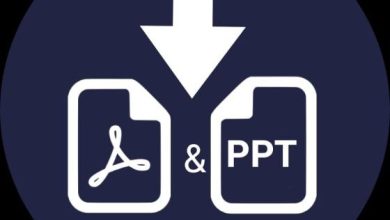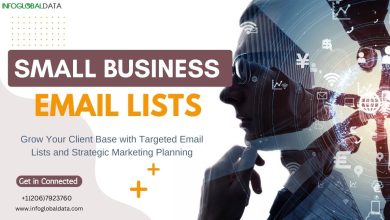Choosing the best business laptop for your team

Choosing a business laptop today can be daunting, encompassing dozens of models and countless specs from different brands. With the right decision, you’ll set yourself and your team up with a strong foundation to get work done. This guide will help you make sense of business laptop specs, how they relate to specific use cases and, ultimately, which one is the best fit for your business.
1. Processor
The central processing unit (CPU), or simply the processor, is both the brain and brawn behind a business laptop’s overall performance. As its name suggests, it processes commands into actions and information. There are many technical specs associated with processors, but the distinction between Intel Core i3, i5 and i7 processors can be a great place to start. General business users can work with an i5 processor, while heavy multitaskers or users of performance-intensive programs will likely need an i7.
When it comes to a processor’s clock speed, keep in mind that the higher the GHz, the faster the clock speed and the smoother the user experience will be. It’s also helpful to recognize how many cores the processor has, ranging from two (dual-core) up to eight (octa-core). These multiple cores enable more powerful multitasking: the more, the mightier. Samsung business laptops with Intel EVOTM certification have the performance business users need while remaining lightweight.
2. Microsoft Windows 11
Business laptops running Microsoft Windows are available in Home and Pro versions. If you’re looking to provide devices to a team of employees, Windows Pro unlocks administrative tools such as remote desktop capabilities (allowing an IT professional to remotely access a computer for troubleshooting), group policy (managing settings for multiple users) and enhanced cybersecurity features. If you’re a solo entrepreneur working from home, Windows Home could suffice for your needs, though Pro remains the better pick for extra security and scalability as you grow your business. If you’re shopping for a business laptop now, you’ll want one that’s Windows 11-ready.
3. Display size
Traditional desktop monitors start at roughly 24 inches diagonal and can run as big as 49 inches for users who need a larger screen to do intricate visual work. But among business laptops, the sweet spot for screen size is 13 to 16 inches diagonal. If you go much smaller, you’re entering tablet territory.
What’s the best tablet for your business?
As you compare screen sizes, you’ll also want to check resolution and brightness. With 1080p Full HD (FHD) resolution, a step up from standard HD, even a smaller screen is still easy on the eyes. There are some high-end laptops with 4K displays available, but most business users will find FHD sharp enough for their daily work.
4. Weight and thickness
In business laptop design, the name of the game is portability. The sleekest models include the Galaxy Book3 series, which weighs roughly four pounds or less.
- Galaxy Book3 (15.6-inch display): 3.41 pounds, 0.65 inches thick
- Galaxy Book3 Pro (16-inch display): 2.62 pounds, 0.44 inches thick
- Galaxy Book3 Pro 360 (16-inch display): 3.73 pounds, 0.50 inches thick
- Galaxy Book3 Ultra (16-inch display): 3.97 pounds, 0.65 inches thick
For hybrid workers who are clocking in from various locations every week, every ounce is noticeable, and a lighter device is worth the extra cost. Just be sure you’re getting the right combination of portability (weight) and performance. For users who work mostly in one location, a more robust laptop could come into play as a desirable and durable option, particularly if it has more ports.
5. Battery life
Low battery is always inconvenient, but it’s even worse when it happens to your computer in the middle of work. Business laptop battery specs are often rated in hours, based on average usage. But battery life is a moving target, and it shifts depending on where you’re working, how you’re working and how much power you’re using.
If you’re always on the go or running many programs simultaneously, your ideal device should have all-day battery or better. If you’re primarily at a workstation — with easy access to an outlet — battery life may not be as important. Also visit laptop repair near me dubai expert. Other common battery ratings include watt hours (WHr) and milliamp hours (mAh), which are a little more complex to contextualize and not usually necessary to calculate. In general, look for a business laptop rated for at least 10 hours of battery power with reputable reviews reporting on standard battery life tests.
6. RAM
Random-access memory, or RAM, represents the amount of data that a computer can store (short-term) for the processor to instantly access. You might see budget mobile devices offering 4GB, but 6GB is really the baseline on a business laptop for business. If you’re running high-powered apps, you’ll need at least 8GB, and the same applies if you constantly have multiple apps running in the background. If you spend most of your day juggling your email app, a web browser, Microsoft Office and a chat app — while jumping in and out of videoconferences — you’ll want to be equipped with 8GB to 16GB RAM. Graphic designers and programmers in particular will thank you for more RAM in their business laptops.
7. Storage
Memory (RAM) and storage are notably different. While RAM allows you to quickly complete functions like opening an app or webpage, storage enables your processor to access permanent files from the hard drive. Business laptops have much more storage than RAM, both quantified in gigabytes (GB), or with storage reaching terabytes (TB). One TB equals 1,000 GB.
Some laptops offer 128GB, but that space may run out for users who work with large files, especially video or high-resolution photos. 256GB is a safer option, unless your workforce manages everything in the cloud, in which case more storage isn’t a sticking point.
Think of RAM as performance, and storage as space. You’ll want to find a balance between the two, tipping the scale slightly in either direction based on the way you work. Need your notebook to be extra fast so you can blaze through tasks? Prioritize RAM. Have lots of files to store on your notebook for easy access? Storage may be more important to you. Keep in mind, you’ll need less storage if you store files in the cloud, making it easier to meet your need for speed. A solid-state drive (SSD) is a must for storage these days, compared to older hard disk drives (HDDs) that make laptops heavier and slower. An SSD using the NVMe (Non-Volatile Memory Express) interface provides the most optimal performance.
8. Keyboard and touchpad
Technical components like RAM represent an important part of this equation — but so do the physical components of your business laptop. You want both the keyboard and trackpad to function effortlessly and comfortably. Mid-range and higher-end machines tend to focus more on these details than budget devices, which can feel clunkier. It’s primarily a matter of how important the ergonomics are to you, from the quietness of the keys to the smoothness of the trackpad. If you frequently use computer shortcuts, for instance, an advanced trackpad can allow multiple customizable swipe functions, beyond the basics of tapping and navigating. Higher-end business laptops also offer advantages like backlit keyboards that can come in handy when working in a darkened airplane cabin.
9. Camera and microphone
In today’s videoconferencing world, computer cameras and microphones have gone from afterthoughts to essentials. Galaxy Book3 and Galaxy Book3 Pro devices make it easy to turn your camera on and off in an instant — and catch every detail of your call with screen recording. These business laptops also have high-definition audio with background noise removal, so you can be an active participant even from a busy home office or cafe.
It’s hard to top a modern smartphone for videoconferencing quality, but with the right tools you can come close. Make sure the device you choose has at least a 720P internal camera and dual array mic so you look and sound professional. Unless you’re running a podcast or webinar series, external webcams and mics add unnecessary clutter that undoes the convenience of a business laptop. A pair of quality earbuds, however, could certainly be considered essential in their own right.
10. Touchscreen
For certain roles, like graphic or web designers, a touchscreen can prove very helpful, even in a notebook form factor. The Galaxy Book3 360 edition will satisfy this need in a highly effective way. But if you’re in a different line of work and still want touchscreen capabilities on occasion for marking up documents or making quick notes, a high-end tablet like Galaxy Tab S8 or the 3-in-1 Galaxy Z Fold4 can also be a good solution for your work style and can consolidate your business tasks into the most compact device possible. Tablets can also serve as a second screen for when you’re on the go, or if you don’t have a separate monitor in your home office setup.
11. Ports
Do your other devices connect to USB, Thunderbolt or a combination of ports for different devices? What type of USB port do you need? How about Ethernet, HDMI or microSD? Not only do you need your business laptop to have the right types of ports, you may want several ports of the same kind. More ports mean fewer dongles and easier connectivity. To make your work life easier, aim for at least a Thunderbolt, USB-C, USB 3.2 and HDMI port. Thunderbolt is especially fast and versatile for business users. Some business laptops may sacrifice ports for the sake of ultra-slim design, but that’s not always necessary anymore, as devices such as the Galaxy Book3 series continue to become lighter, more compact and more powerful without sacrificing ports.
12. Price point
Laptops can cost less than $500 or more than $5,000. Few business users can get by on the low end, and few require the high end. The mid-range market is where value really opens up. You can get everything you need in a sleek, stylish business laptop — and get the same notebook or similar for your team so everyone can work flexibly. If you like a specific model that’s a little out of your price range, your best bet to find something in your budget is to look for lower RAM, smaller screen size and less storage. But when you’re buying a work computer that you’ll use every day for years, a slightly higher cost may be justified to get your ideal specs and improve productivity.
Putting it all together
A bit of research goes a long way, especially when it comes to technical specifications. Now you can compare any and every business laptop with confidence, and quickly decode its key features like a pro.
Laptop and smartphone capabilities combine in the Galaxy Book3 series, designed to be as mobile as they are powerful. Here are 10 ways Galaxy Book will make your team more productive and mobile.




